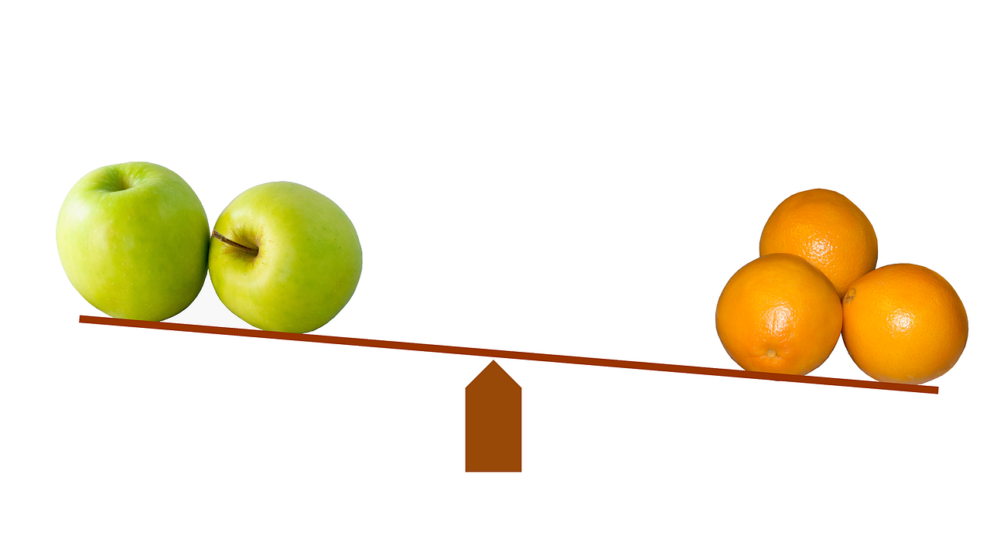A/B testing is a way of comparing two versions of something and seeing which one works better. It’s not a new phenomenon, dating back to around 100 years ago. Farmers conducted basic experiments with how much fertilizer they used. The principle was continued in medical trials, and later adopted by the marketing industry.
A/B Testing: An Explanation
A/B testing has guided marketing campaigns to increase sales for decades, so it makes sense for social media marketers to use this method. But how does it work?
The aim is to understand how to make your social media content perform the best it can. You decide which metric to measure this by, and what indicators you will use to measure this. We will look at these in more depth later.
The premise is very simple. To conduct a test, two iterations of an advert are created, with a single variation between them. An audience is split in two, and shown a version each. The responses are then compared to see which worked best.
It’s important to only test one aspect at a time. If you include multiple variations, then it’s impossible to tell which one had the impact. Running a test where you change the image and the text tells you nothing conclusive, and is a waste of time.
How Is This Useful For Social Media
A/B testing is a great litmus test for social media content. You can get instant feedback about what’s working well, and what isn’t. Your output should always have a goal. A/B testing provides insight into how well those goals are being achieved.
A social media presence is a necessity for most brands now. To manage this well, you will need a social media strategy. A/B testing should not only be part of it, but can help inform it too. You can learn what works best for your business across the different platforms and see how your audiences respond to different content.
Your strategy should work in harmony with other aspects of your business. For example, if you manage an eCommerce store, think about mobile-first site design, and social media integration.
Let’s look at the basics of A/B testing for social media, and how it can enhance your content performance.
What Variables Can You Test?
There are many metrics you can measure. Think about which ones could affect your content the most, and make a suitable test plan. Below are some of the most common variables to consider.
Text
A key element of a social media post is the text. What you say, and how you say it is crucial to connect with your audience. This leaves a lot of room to experiment and see what lands best. You could try some of the following, remember to only do one at a time though.
- Headlines are your chance to immediately grab attention. Finesse this vital factor.
- What size is the post? Some engage well with long posts, short-form is better for others.
- Tone of voice. Are you aiming for an authoritative tone, or casual and conversational?
- Opinions on emojis can be divided, so see if they are a hit or not.
- The same goes for hashtags. If they are dropping your engagement rate, drop them.
Images and Videos
Humans are hard-wired to understand information visually. Studies show that the brain processes images 60,000 times faster than it does text. Using visuals can have an impact, and A/B testing can help you work out which types are the most effective.
Try static images against GIFs or videos. If you use video, consider its length. The image content is important. Should photos include people, the product, or both? What about infographics and statistics? Think about the graphic design, and see if certain color palettes work better than others.
Format
Social media encompasses many advertising formats that work in different ways. A Facebook link ad contains a single image, and carousel ads combine multiple visuals into one space, whereas Instagram reels are an increasingly popular video style.
Your campaign aims should help you choose which one might work better. Launching multiple products, or promoting a number of offers? A Facebook carousel seems like a good choice. But always run an A/B test first to make sure you are using the best format for your advert.
CTAs
The call to action is your advert’s endgame. You can spend a long time creating content, but the user needs to make that crucial click-through at the end. That’s why measuring the success of your CTA is one of the most important tests to run.
Try different phrases and see which one has a better click-through rate. What shape, size and color is the button? Don’t underestimate these factors. One A/B test showed that using a green button instead of a red one increased an advert’s performance by 21%.
Audience
Marketing is all about getting to know your audience. Who they are, what motivates them, and their likes and dislikes. By understanding your audience, you can tailor your marketing to suit. Looking at the audience in A/B testing works in a different way. The methods we have looked at above involve changing one element of an advert. Here, the content remains the same but is shown to different groups. You can then see which demographics engage with it the most.
Get to know which platforms work best for your output. A 2022 study has shown that 36% of small businesses noted Facebook to be their preferred platform for sharing content in 2022.
How To Run Your Tests
The essentials of A/B testing are the same as they ever were. Decide which element you want to explore, try out variations on your audience, and see which one is most successful. It is a tried and tested component of social media analytics.
One of the great things about social media A/B testing is the speed at which you can gather information. But it’s important not to rush into the process. Carefully structuring your test methods will get you more meaningful data. Answer these two key questions before you start.
Why Are You Testing?
It’s no good having a generalized aim such as ‘increase engagement’. You need to drill down into what you want to find out, and ask the right questions. Are you trying to increase conversion rates, or reduce your cost-per-action? Maybe you want to see how many impressions your ad is getting, or the time a user spends on a page.
Pick one, and make that your focus for now. You can always run more tests on a different metric later on. Concentrating on one area at a time will yield more concise results.
What Are You Testing?
Now you have decided on your goals, it’s time to work out what indicators will prove them. Align the testing element to the area you want to improve. To optimize click-through rates, you could consider your headline text or the CTA button design. If you want to increase impression rates, do audience testing and see who is looking at your advert.
You are now ready to start testing. Create the two variations based on your planning, and show them to your selected audience. Track and record your results, until you find which variation brings the best results. You can test on further smaller variations to see if this gets you even better results.
Remember to define what your successful campaign looks like. Your testing should give you the information to achieve it.
The Results
You will now have a set of results that inform how to get the best out of your social media content. Your adverts should be optimized to meet your aims, and perform better as a result. Congratulations on a job well done!
This isn’t the end of the process though. A/B testing should be a continuous pursuit, to keep your content being the best it can be. Social media is always evolving, and the algorithms transform at a rapid pace. Audiences can change over time, and there are always more variables to test.
As your business grows, you will need to allocate more resources to run more testing. There are lots of good software solutions on the market that can help manage this, such as Shopify ERP.
Get Your Content Performing
Social media can be effective to help achieve a goal. Whether this is to increase sales or followers, great content can mean great outcomes. But in a world of never-ending output, it can be hard to judge the results.
That’s why social media A/B testing can be so effective. You get real-time data that can make a crucial difference. An eCommerce store can look at what is working best in the marketplace. Influencers can use it to measure their affiliate marketing KPIs.
Use it to let your content be the best it can be. If you have clear questions, A/B testing can give you the answers you need.





